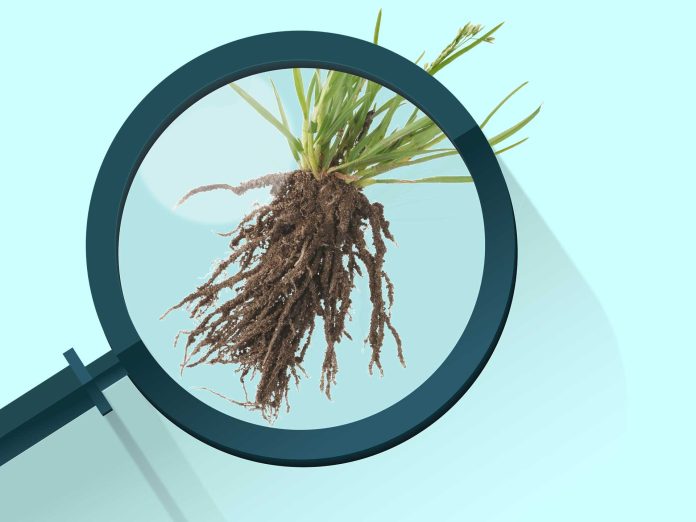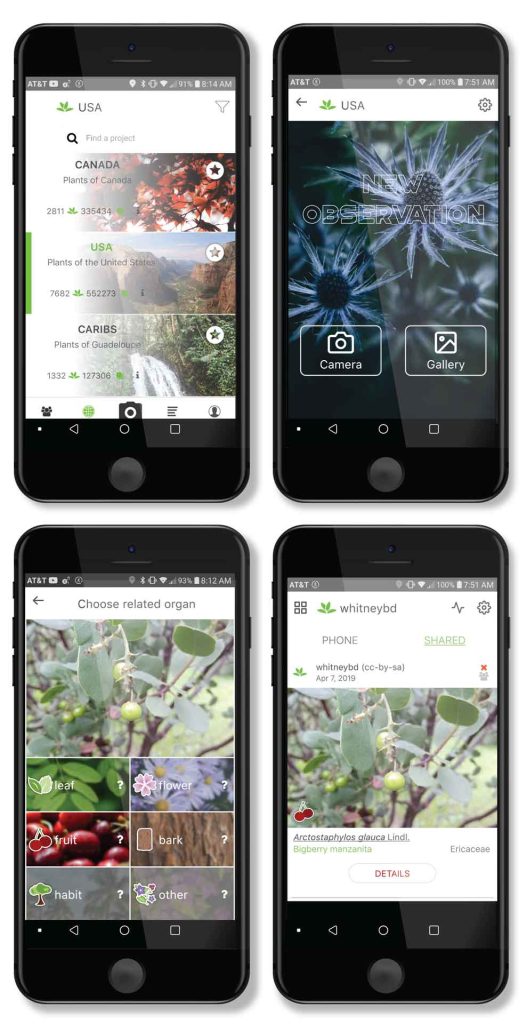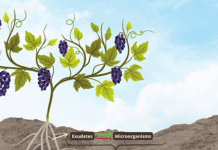Weed identification is the foundation for weed control. For both cultural controls (tillage, weed-whacking, etc.), and herbicides, misidentification can lead to wasted time, money, and resources. But even for experienced weed scientists and botanists, weed identification can be difficult. Traditional keys, for example, primarily rely on our ability to distinguish between plants at flowering, and often require a fair amount of knowledge of botanic terms, and possibly even a microscope. Aside from the difficulty of using the keys, identification at flowering is usually too late for weed control, particularly for the use of many herbicides.
There are many tools available to use for weed identification, ranging from books to cards, to online databases, and even computer programs and smartphone apps. The resources found below are just a few of the plethora of weed identification resources, highlighting some of the most relevant for California, and many that are free or low-cost.
Print
Printed materials may be a bit difficult to carry into the field, obviously, but they can be a good resource, especially for learning more about the biology and ecology of the weed species once it is identified.
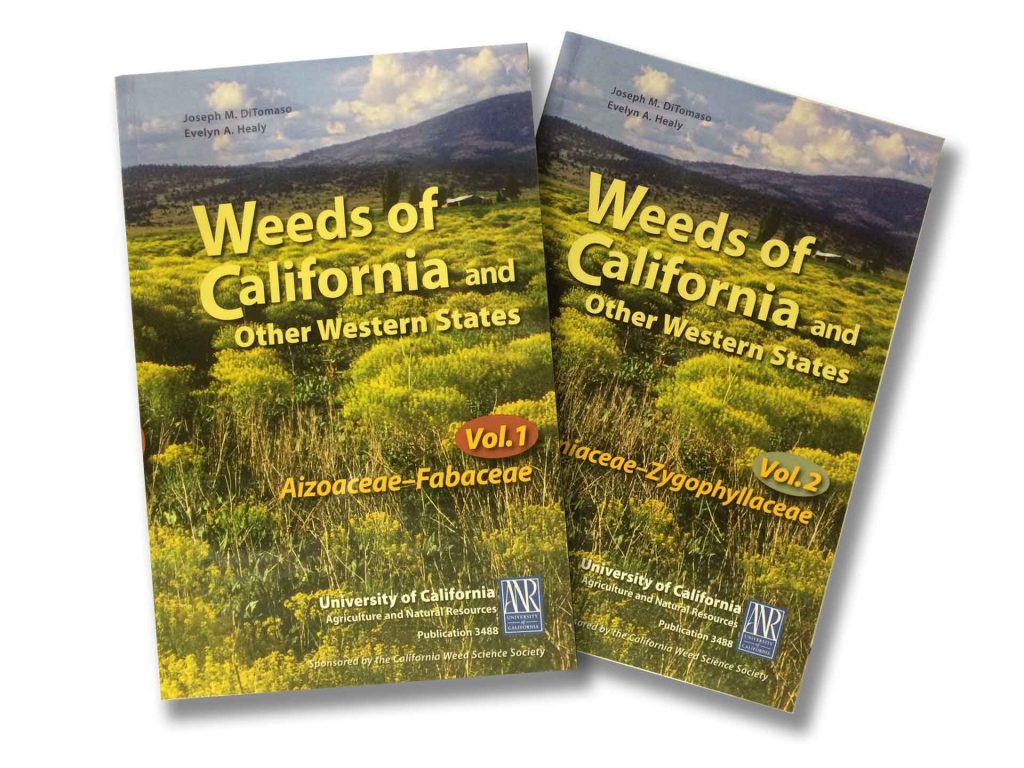
This 2-volume set is available through the University of California Division of Agriculture and Natural Resources (UCANR) website (as well as many other websites), and contains many, many weeds found in California, as well as those that may be likely to move into California from surrounding states. It includes over 700 weed species, in over 60 families. It also has tables to help distinguish between commonly-confused weeds.
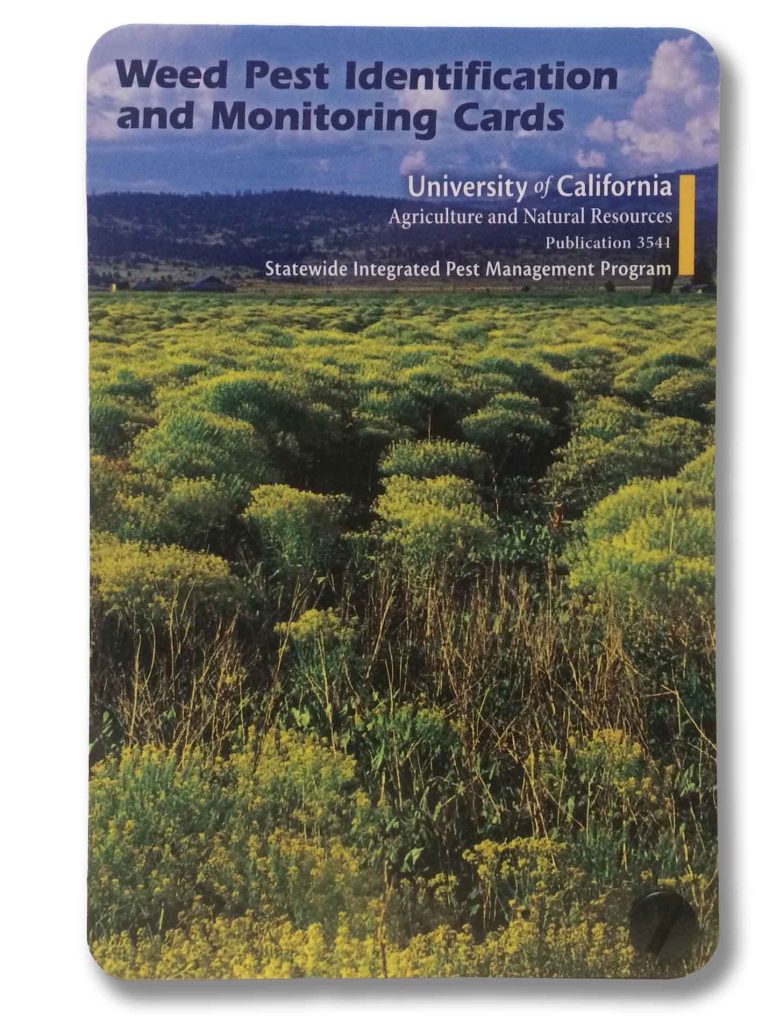
This set of cards is adapted from the Weeds of California and Other Western States book listed above, and contains the 48 most widely distributed weed species in California. It is available from the UCANR website. The weeds are divided into the following eight plant groups, for easy searching:
- Broadleaf annuals, erect
- Broadleaf annuals, low growing
- Broadleaf annual, scrambling
- Broadleaf perennials, not viney
- Broadleaf perennials, viney
- Grass annuals
- Grass perennials
- Sedges
The cards are small and can be held in the hand while in the field. They are laminated, so even if they get moist, they will not be ruined.
Computer Based
There are a couple of resources available (one USB-loaded program and one web-based application) if you need some help identifying weeds, especially during early growth stages. While the USB can only be used on a computer, the web-based application can also be used on a smart-phone (in the field), although it does require connectivity to the web to be able to do so.
1) Weed ID USB (DiTomaso, 2014)
The Weed ID USB replaces the CD’s that came with the original 722 broadleaf species and 200 weedy grasses. Using the program, it is possible to identify weeds even at the seedling stage, using key characteristics visible to the naked eye, instead of requiring a microscope or hand lens. For example, key traits such as stem cross-section, leaf shape, hairs on the leaves, etc. It also allows the user to select the family, or genus, if known. After making selections, the program will, through process of elimination, show a list (with photos and descriptions) of all the weed species fitting those characteristics. Once down to a few species, the user can visually compare the photos of their specimen to the photos in the database.
The USB is available through the California Invasive Plant Council Website (www.cal-ipc.org), or by contacting Dr. DiTomaso directly (jmditomaso@ucdavis.edu).
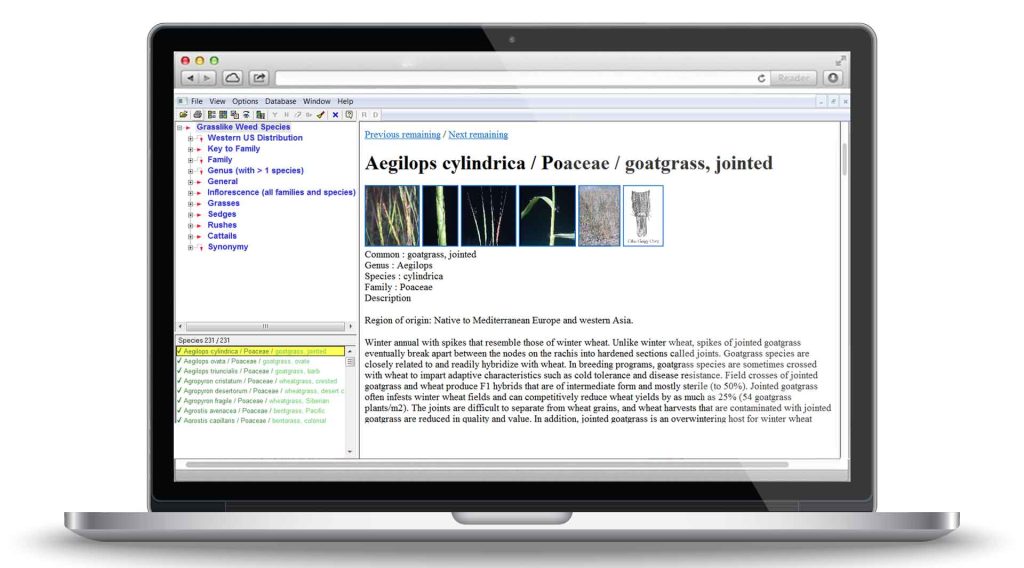
2) Online Weed Identification Tool (University of Wisconsin-Madison):
The University of Wisconsin-Madison hosts an online weed identification tool that is very similar to the USB drive (above). It is freely available online, at https://weedid.wisc.edu/weedid.php. Several states are available, so be sure to select California as the search location. There are far fewer species in this database in comparison to the USB drive, but the identification method is similar. The user has to select plant characteristics, and through a process of elimination, the possible weed species with those characteristics will remain. The user can then use the photos to identify their specimen.
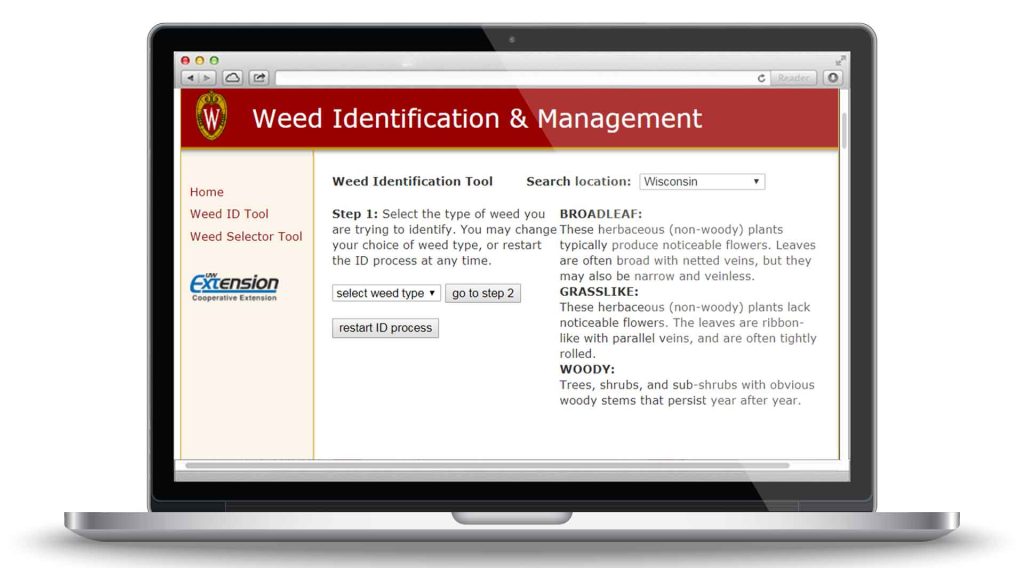
Mobile Apps
Although there are several smartphone applications available for both Androids and IPhones, testing of several yielded only one with enough species to make it worthwhile to use in the field.
1) Pl@ntNet (www.plantnet.org)
The Pl@ntNet app (available for both Android and iPhone) was created by a consortium of universities and public research institutions. It contains plant species from all over the world, so the user has to be careful to select the correct continent (North America). It does not cover only weeds, however, which is important to note. It also contains native and naturalized species.
The app works by matching key photo characteristics with identified photos already in the database. The user takes a photo, then specifies which characteristic to focus on (leaf, fruit, bark, flower, habit, or other), then the app matches the photo with potential specimens in the database. The user then selects the species that most closely matches, and submits it to the app, where it is reviewed (seemingly by experts). Upon testing it, it was able to accurately identify several grasses, broadleaves, and shrubs.
In-Person Assistance
When in doubt, ask another person to assist in identification. Fellow pest control advisers, growers, and other colleagues are great resources. However, if it appears to be a new or unknown weed species in a particular cropping or natural system, there are other resources available to help as well.
1) University of California Cooperative Extension advisors and specialists
County-based advisors and campus-based specialists can be helpful in providing weed identification. Local offices are located in almost every county in California, and advisors there can tap into larger networks of weed scientists for help with identification, if they are unable to identify the weed themselves.
2) Weed identification at the UC Davis Herbarium
For really tricky cases, the UC Davis Herbarium has botanists on staff that can assist in identification. Visit the herbarium website at https://herbarium.ucdavis.edu/services.html for collection and sample delivery protocols. The herbarium can identify up to five samples per person per year at no charge, and after that, an hourly rate for identification applies.
There are many more tools available for weed identification beyond the ones listed above, including many helpful keys and online resources. In order to identify a weed, it may be necessary to utilize many tools and second opinions, particularly if it is a less well-known species, or if it is new to a cropping or natural system. While identification can be time-consuming, especially when we are anxious to get rid of a weed, ensuring proper identification before deciding on a plan for control can save a lot of time, energy, and money over the long run.






